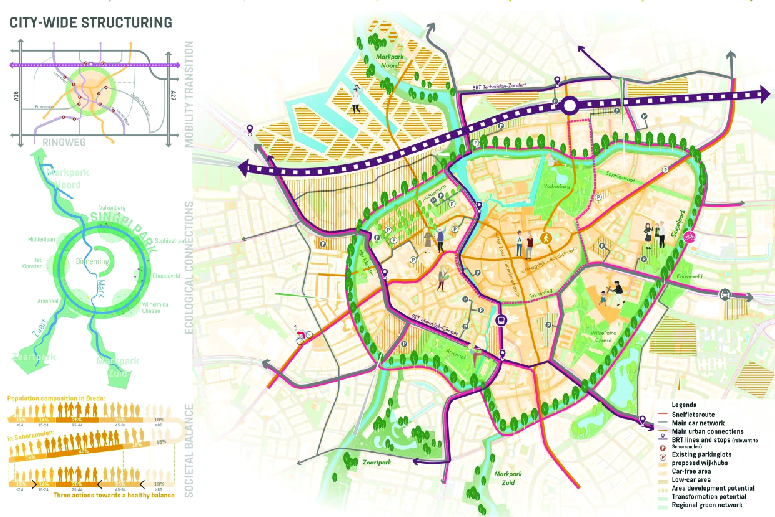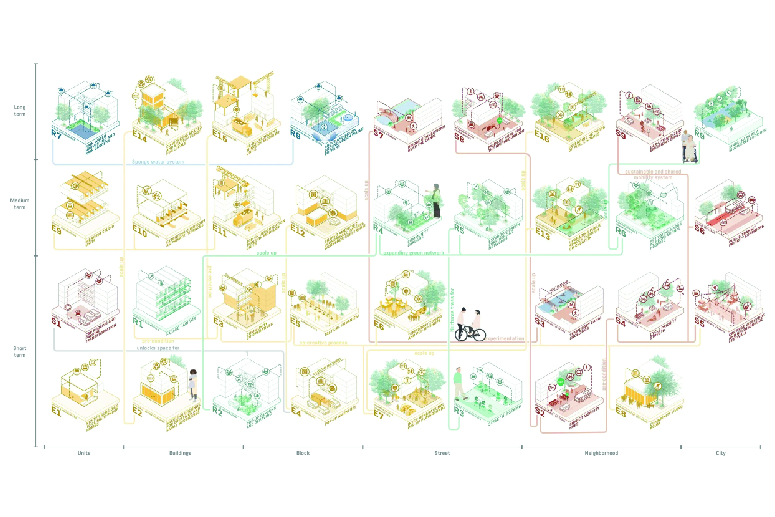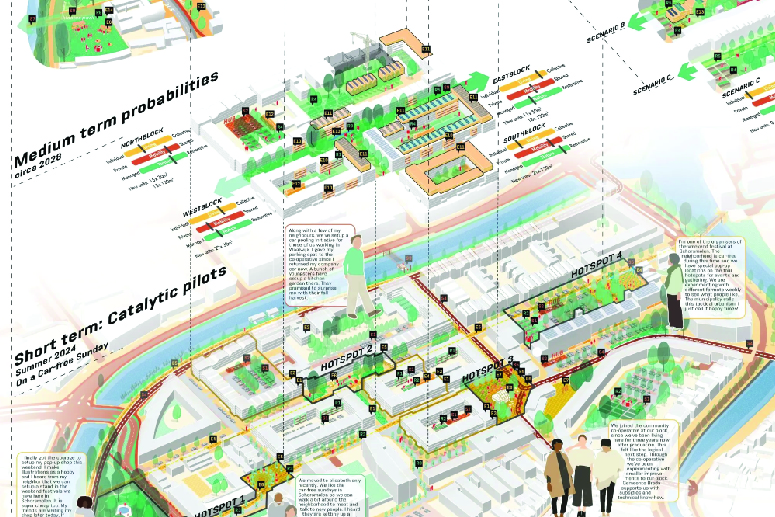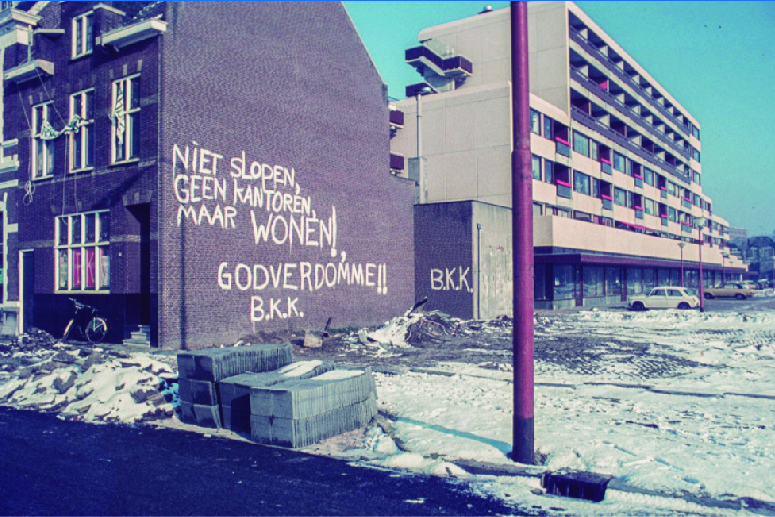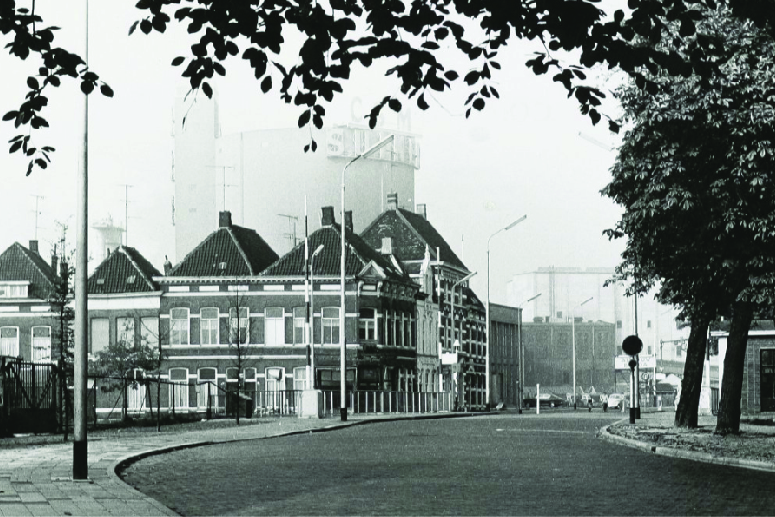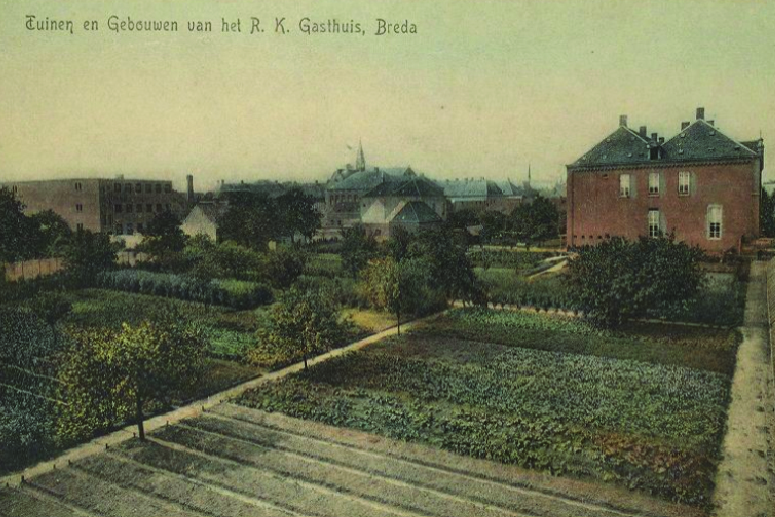Nurturing Schorsmolen - A socio-spatial framework for co-creating a liveable future
Schorsmolen (NL) - Mention Spéciale

TEAM PORTRAIT
INTERVIEW
Click on the images to enlarge
1. How do you define the main issue of your project in relation with the theme “Living Cities Imagining architecture taking care of the milieus”? And in which way do you think your project can contribute to an ecological and/or social evolution?
In our project “Nurturing Schorsmolen” we tried to take a step back from conventional urban development approaches and we asked ourself: how can people who live a city, also shape and design their own city? And further: how can they contribute to ecological and social evolution in a participated manner, and what is the role of the public sector in this process. In our project we attempted to redesign this dynamic, and we propose a new planning process where local residents (present and future) are enabled by the public sector to deliver change in terms of demographics, ecology, and social behaviour. We see this model as an alternative to the more common re-development of social housing neighbourhoods into higher-end housing segments. A process that more or less willingly tries to replace the existing population and gentrify inner-city areas. We, instead, propose to start with a dialogue with the existing residents. To ask them how to best densify/greenify/transform their block. And eventually to require a shared direction forward.
2. How did the issues of your design and the questions raised by the site mutation meet?
We find Schorsmolen to be a perfect location to test this new dynamic. It is an existing neighrbourhood that necessitates demolitions to be re-developed. It has modest to good spatial qualities, meaning there is no urgent need to transform and re-build. Moreover, most housing is already owned by local housing corporations, which can form an important middle layer in the communication between single households, and the needs of the local government.
PROJECT:



We have all been busy with urban planning and design projects in the Netherlands, and we have always been confronted with a private developer-oriented mentality that leaves little space both to the needs of the community, and the needs of the individuals. In this project we have tried for the first time to give an alternative direction to this mainstream planning process.
SITE:



Our project was strongly oriented on the implementation process of the project, rather than on a defined design solution. We believe at the core of every project should be a negotiation between the public and private sector, if possible mediated by housing corporations or communities of owners. The role of the public sector would be to determine challenges and requirements from the community (in terms of sustainability, climate, and development), and it is up to the residents to come up with their own solutions to these collective issues.
5. How did you form the team for the competition and if so what are the skills you associated?
All three of us graduated in the Master of Urbanism by the Technical University of Delft. We met and got to know each other in the student association of the master, “Polis”, and later we were colleagues working in the firm PosadMaxwan.
6. How could this prize help you in your professional career?
We want to use this project and more in the future to research and bring forward a new way of planning, both in terms of design and process. One more oriented to the local community needs and less on projected growth and development.
TEAM IDENTITY
Legal status:
Team name:
Average age of the associates: 28 years old
Has your team, together or separately, already conceived or implemented some projects and/or won any competition? if so, which ones?
None together, but yes separately.
Stefano Agliati:
- 1st prize in Milan Navigli Canal Callenge
- Special Mention Europan16 “EQUALINES”
Ganesh Babu:
- 2nd prize (Ente)Kochi Competition
- 2nd prize Namma Kovai Competition
- 2nd prize Streets4people design competition
Mathias Gorz:
- City of Kraków Award 1st prize Urban Renewal Strategy for the City of Brok
- 1st prize competition for the redesign of University Square in Bialystok
